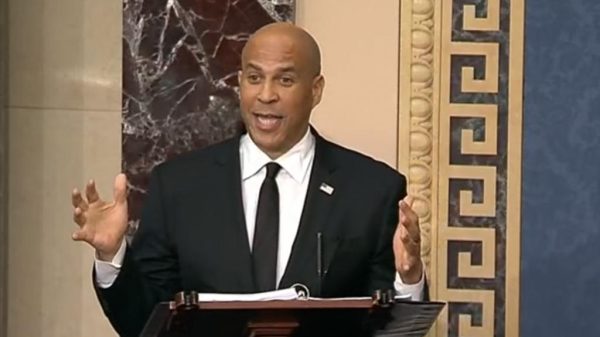Social Security has long been a financial lifeline for millions of Americans, but recent concerns about its future have left many retirees worried. In fact, a staggering 70% of retirees fear potential Social Security cuts in the coming years, according to recent surveys. With government reports indicating a possible shortfall, the question on everyone’s mind is: When could these cuts begin, and what can you do to prepare?
To understand the potential timeline and impact of Social Security reductions, we break down the key factors, expert insights, and proactive strategies retirees and future beneficiaries can take to safeguard their financial well-being.
Social Security Cuts:
| Key Insight | Details |
|---|---|
| Percentage of retirees concerned | 70% worry about potential Social Security cuts |
| Projected Trust Fund depletion | 2033 (SSA report) |
| Potential reduction in benefits | Up to 23% cut if no legislative action is taken |
| Key reason for funding shortfall | Declining worker-to-beneficiary ratio and rising retiree population |
| Government response options | Increase payroll taxes, raise retirement age, reduce benefits |
| Actionable steps for retirees | Diversify income sources, delay claiming benefits, maximize retirement savings |
| Official SSA website | www.ssa.gov |

With 70% of retirees fearing Social Security cuts, it’s essential to stay informed and prepare accordingly. While the trust fund may be depleted by 2033, proactive steps like delaying benefits, diversifying income, and budgeting wisely can help safeguard your financial future. Stay updated on legislative changes and adjust your strategy to maximize your retirement security.
Why Social Security Cuts Are a Growing Concern
1. Understanding the Social Security Trust Fund Shortfall
Social Security is funded primarily through payroll taxes, collected from workers and employers. These funds are deposited into two trust funds:
- The Old-Age and Survivors Insurance (OASI) Trust Fund
- The Disability Insurance (DI) Trust Fund
However, due to demographic shifts—including longer life expectancy and a shrinking workforce—more money is being paid out than collected. According to the Social Security Administration (SSA), the trust funds could be depleted by 2033 if no changes are made.
A growing number of baby boomers reaching retirement age means more people are withdrawing benefits, while fewer younger workers are contributing payroll taxes. In 1960, there were five workers per retiree; today, that number has dropped to less than three workers per retiree.
2. How Big Could the Benefit Cuts Be?
If the trust fund runs out, Social Security will still receive payroll taxes, but these will only be enough to cover 77% of scheduled benefits. That means retirees could face a 23% reduction in their monthly checks unless Congress takes action.
For example:
- If you currently receive $2,000 per month, a 23% cut would reduce it to $1,540.
- Over a 10-year retirement, that could mean losing over $55,000 in benefits.
- Those on fixed incomes could struggle to cover essential expenses like housing, healthcare, and groceries.
This would be particularly difficult for the millions of retirees who rely on Social Security as their primary source of income. According to the Center on Budget and Policy Priorities (CBPP), nearly 40% of retirees depend on Social Security for at least 90% of their income.
3. When Could Social Security Cuts Begin?
Based on the 2023 SSA Trustees Report, the OASI trust fund is projected to be depleted by 2033. If no legislative solutions are enacted before then, benefit reductions could take effect starting in 2034.
What Can Retirees and Future Beneficiaries Do?
1. Consider Delaying Social Security Benefits
One way to maximize your Social Security income is by delaying your benefits beyond full retirement age (FRA):
- Claiming at 62: Reduces benefits by up to 30%.
- Waiting until FRA (66-67): Allows you to receive full benefits.
- Delaying until 70: Increases benefits by 8% per year after FRA.
For example, if your full retirement age benefit is $2,000 per month, delaying until age 70 could boost your monthly payment to approximately $2,480.
2. Diversify Your Retirement Income
Since Social Security may not be enough, retirees should explore alternative income streams, such as:
- 401(k) and IRA withdrawals
- Dividend and bond income
- Part-time work or consulting
- Real estate investments
- Annuities and other guaranteed income sources
Having multiple sources of income can help you better withstand any potential cuts in Social Security benefits.
3. Reduce Expenses and Plan for Inflation
With potential benefit cuts, budgeting wisely is essential. Consider:
- Downsizing to a more affordable home.
- Cutting non-essential expenses like luxury travel or memberships.
- Factoring in inflation when planning your long-term financial needs.
- Switching to more cost-effective healthcare plans to save on medical expenses.
4. Stay Informed on Policy Changes
Congress has several options to address Social Security’s funding gap, including:
- Raising payroll taxes on workers and employers.
- Increasing the retirement age gradually.
- Adjusting benefits for higher-income retirees.
Following legislative discussions and policy updates can help you adjust your retirement strategy accordingly.
Trump’s $2 Billion Firestorm Relief Fund for L.A.: What It Means for Residents!
USA $2,700 Social Security, SSI, SSDI & VA Payments – Check Payment Dates & Eligibility!
Frequently Asked Questions (FAQs)
1. Will Social Security go away completely?
No, Social Security will not disappear, but without legislative action, benefits could be reduced by 23% starting in 2034.
2. Should I claim Social Security early before cuts happen?
Claiming early may reduce your total lifetime benefits. Delaying can increase your monthly payout and provide greater financial security.
3. What can Congress do to fix Social Security?
Potential solutions include raising payroll taxes, increasing the retirement age, or adjusting benefits for higher earners.
4. How do I check my estimated benefits?
Visit the Social Security Administration website and log into your My Social Security account to see your personalized estimate.
5. Will younger generations receive Social Security?
Younger workers will still receive benefits, but they may face higher taxes, later retirement ages, or reduced benefits.








































